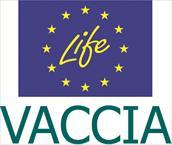
Terrestrial and lake ecosystems in the boreal zone are sensitive in respect to changes in climatic conditions. In warmer climate the productivity of both ecosystems may increase because of longer growing season and higher inorganic carbon dioxide/nutrient concentration in atmosphere/water. Increasing terrestrial production affects the net ecosystem exchange (NEE) of CO2 as well as the functioning of terrestrial and aquatic food webs. Increasing productivity may thus enhance the carbon flux to the atmosphere and/or the organic carbon storage and/or leaching from the catchment areas, i.e. from peatlands, forests and agricultural soils. Moreover, nitrogen and phosphorus turn-over times and leaching may also change due to higher production and changes in the food webs. Regarding to nutrient losses boreal catchments are especially vulnerable outside the growing season, i.e. in autumn, winter and spring when nutrient uptake by plants is low and erosion can be high. If climate change induces higher precipitation in winter and thus intensifies water transport out of the catchments, which is expected on the base of model calculations and empirical long-term data, the biogeochemical processes as a whole will be modified. Nutrient loadings as a part of that will be indicative and thus can be used as a “sensitivity index” of the overall processes in terrestrial ecosystems. In addition, when nutrient loadings have several consequences on aquatic ecosystems such as eutrophication and cascading food web responses, they can be regarded important for ecosystem health.
On the other hand, freshwater ecosystems are storages of nutrients alongside the hydrological transport from upper catchment areas to the sea. Within the Baltic drainage area the capacity of lakes to retain high percentage of inorganic and organic nutrients is good, but the efficiency of these ecosystem services may change in the course of changing weather conditions. Therefore the vulnerability of nutrient retention will be assessed in relation to climate change, and in particularly in relation to expected changes in hydrology and respective changes in nutrient loading. Moreover, climate change may also alter food webs and interrelationships between species. In warmer climate the distribution of native terrestrial and aquatic species will change, but also new invasive species may appear. These processes can be slow but species may also spread quickly to new locations. Invasive species can influence the food webs and ecosystems in a way which may be difficult to predict. Therefore their risk should be considered and management strategies to avoid their harmful effects should be prepared in advance. In this respect it would be necessary to evaluate differences in adaptation and responses of key species to the expected environmental changes in both aquatic and terrestrial ecosystems.
This Action focuses on the vulnerability of catchment areas and lakes to climate change impacts, and related adaptation measures. We use short-term and long-term ecological data sets for the analyses of most appropriate management and adaptation strategies and actions for specific domains. In this respect, results of different modelling approaches will be applied and used for developing the management and adaptation measures. The actions will be taken as a part of the work of the Lammi-LTER area in southern Häme.
Expected results
- meetings and workshops together with local and regional end-users (regional environment centre, local and regional farmers´ associations, local forestry associations, and Metsähallitus)
- internet based information package on local and regional environmental issues related with climate change and its impacts on both terrestrial and aquatic ecosystems
- network of local and regional actors active in environmental issues and especially in the management and adaptation to climate change
- improved knowledge of climate change and its consequences as well as adaptation strategies
- better and more realistic linkage of environmental issues and socio-economical aspects (cost-benefit)
- management and adaptation measures relative to the climate change
Contact person
Lauri Arvola, University of Helsinki, firstname.lastname@helsinki.fi